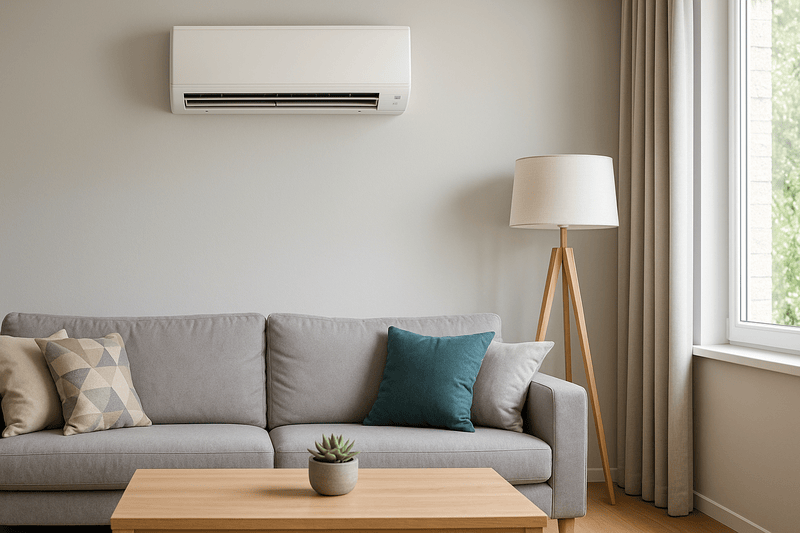With unpredictable summers, rising humidity, and long hot spells, air conditioning is no longer a luxury for most Australians—it’s a necessity. But when it comes time to install or upgrade your air conditioning system, one of the most common mistakes is underestimating (or overestimating) the size of the unit needed.
Enter the aircon calculator: a practical, data-driven tool that helps homeowners, builders, and business owners determine the ideal cooling capacity based on room size, insulation levels, layout, and usage patterns.
If you’ve ever wondered, “How big should my aircon be?” or “Am I overpaying for power because my system’s too large?”, this article has you covered. And we’ll show you how tools like the Select Electrical aircon calculator tool make this process faster and far more accurate.

Why Choosing the Right Air Conditioner Size Matters
When it comes to air conditioning, bigger isn’t always better—and neither is cutting corners to save upfront costs.
Here’s what can go wrong with a poorly sized unit:
- Too small: Your system struggles to cool the space, runs constantly, wears out quickly, and increases electricity costs.
- Too large: It may cool the room too quickly without properly dehumidifying the air, leading to a clammy indoor climate and wasted energy.
- Incorrect placement or zoning: Even the right-sized unit may underperform if the air flow doesn’t suit the layout or insulation is poor.
That’s why a sizing tool like the Aircon Calculator – Select Electrical is so useful—it’s designed to eliminate guesswork and avoid expensive mistakes.
What an Aircon Calculator Actually Measures
Air conditioning load calculators use a set of logical inputs to estimate the required cooling output in kilowatts (kW). These inputs generally include:
- Room dimensions (length x width x ceiling height)
- Number of occupants
- Window size and orientation
- Insulation type and roof material
- Sun exposure and shading
- Appliances and electronics that add heat
- Preferred temperature range
With this information, the calculator provides a recommended cooling capacity range for split systems or ducted units. Some advanced tools also recommend zoning options or suggest compatible models.
This is more than just a rough guide—it’s the first step to a high-performance system tailored to your home or business needs.
The Benefits of Using a Digital Aircon Calculator
Why not just ask a salesperson? Because an objective, online tool ensures your decision is based on building science rather than commission-driven advice.
Benefits of using an aircon calculator:
- Time-saving: Get results within minutes, without booking an onsite consultation.
- Accurate: Based on real metrics, not estimates or industry rules-of-thumb.
- Free: Tools like the Select Electrical aircon calculator tool are available 24/7 and cost nothing to use.
- Customisable: Input your specific details to reflect your home’s exact conditions.
- Confidence-building: Enter discussions with suppliers or installers knowing your approximate system size and power needs.
For a deeper understanding of how thermal efficiency can affect system performance, this Blogrip article on passive design offers complementary advice.
Matching Room Type to Cooling Capacity: A Quick Overview
Here’s a general reference to help visualise the range of system sizes needed for different areas:
- Small bedroom (up to 20m²): 2.0–2.5 kW
- Home office or study (20–30m²): 2.5–3.5 kW
- Living/dining combo (30–50m²): 5.0–6.0 kW
- Open-plan area (50–70m²): 7.0–8.0 kW or more
- Commercial spaces: Varies greatly depending on ceiling height, glass exposure, and occupancy
These are rough numbers. Factors like large windows, poor insulation, or high internal heat load may require a more powerful unit than average sizing tables suggest.
That’s why it’s worth running your building through the Aircon Calculator – Select Electrical tool to fine-tune your selection.
What Happens After You Calculate?
Once you’ve used a calculator to determine your cooling needs, what’s next?
- Confirm your building’s features: A quick inspection of insulation, ductwork, and zoning can further refine your choices.
- Choose a system type: Split system? Multi-head? Ducted? Portable?
- Request quotes: Knowing your required kW capacity puts you in a stronger position to evaluate proposals.
- Plan installation: Ensure vents or indoor heads are placed for maximum efficiency.
- Explore energy rebates: In some regions, incentives may be available for energy-efficient system installations.
Many professional installers, including those at Select Electrical, offer obligation-free site visits to validate your calculator results before finalising recommendations.
Using the Calculator for Existing System Upgrades
If you’ve already got an aircon system that seems underwhelming—or far too powerful for your needs—an online calculator can help you assess whether it’s worth upgrading.
Use the tool to compare your current unit’s kW capacity with what your space actually requires. If there’s a mismatch, that may explain performance issues or inflated power bills.
For example, if your living room should be cooled by a 6.5kW system but you’re running a 3.5kW model, you’re likely running the unit at maximum output—and cost—for very little comfort.
You can learn more about energy-saving retrofit tips in this Blogrip post on appliance upgrades.
Features That Affect Aircon Sizing
Beyond basic room size, there are several features that can heavily impact aircon performance and thus the ideal system size:
- Double glazing vs. single-pane windows
- Insulated vs. non-insulated walls and ceiling
- Dark roofing materials (absorb more heat)
- North-facing glass areas
- Open staircases or connected upper floors
- Whether the area is enclosed or part of open-plan layout
A high-quality aircon calculator incorporates many of these elements into its logic. That’s why we recommend tools like the Select Electrical aircon calculator tool that factor in environmental and structural variables—unlike generic estimation charts.
Why Work With Select Electrical?
Not all aircon installers are created equal. Select Electrical is known for their transparency, practical expertise, and range of climate control options suited to Canberra and surrounding regions.
When using their calculator, you also gain access to:
- Detailed installation support
- Commercial and residential aircon solutions
- Optional energy audits
- Guidance on energy-efficient systems and smart controls
- Post-installation servicing and support
With decades of experience in local conditions, they understand how to turn your sizing results into a complete climate solution.

Leave a Reply